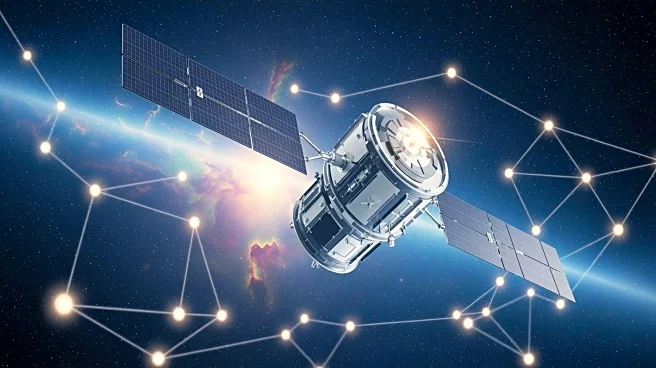What's Happening?
MetTel has initiated a comprehensive modernization of the General Services Administration's (GSA) network and voice infrastructure under a $230 million task order from the Enterprise Infrastructure Solutions vehicle. This project aims to improve operational
efficiency, security, and connectivity across 800 sites globally. MetTel is employing advanced technologies such as SD-WAN, zero trust architecture, and low Earth orbit satellites to facilitate federal employees' work in geographically dispersed and remote locations. The modernization effort includes migrating legacy time-division multiplexing services to a modern SIP-based environment, enhancing broadband and Ethernet services, and upgrading data circuits to meet bandwidth needs for returning to office settings.
Why It's Important?
This modernization project is significant as it sets a new benchmark for federal technology infrastructure, ensuring that GSA's network is secure, resilient, and scalable. By integrating zero trust security with SD-WAN, MetTel is eliminating traditional managed trusted internet protocol services gateways, optimizing traffic flow for cloud-based applications, and enhancing security measures. The use of low Earth orbit satellites is particularly crucial for improving connectivity in remote areas, which can enhance the efficiency and effectiveness of federal operations. This initiative reflects a broader trend towards modernizing government infrastructure to meet contemporary technological demands and improve service delivery.
What's Next?
As MetTel continues to implement these upgrades, the focus will likely be on ensuring seamless integration and operation across all sites. The modernization of voice services and migration to SIP-based environments will require ongoing support and monitoring to maintain service reliability, especially for critical life-and-safety lines. Stakeholders, including federal employees and technology partners, will be closely observing the project's progress and its impact on operational efficiency. Future steps may involve further enhancements to accommodate evolving technological needs and potential expansions to additional sites.
Beyond the Headlines
The shift towards zero trust architecture and advanced satellite connectivity highlights a growing emphasis on cybersecurity and remote access capabilities within federal agencies. This project could influence other government bodies to adopt similar modernization strategies, potentially leading to widespread improvements in public sector technology infrastructure. Additionally, the integration of cutting-edge technologies may prompt discussions on the ethical and legal implications of increased surveillance and data management within government networks.














